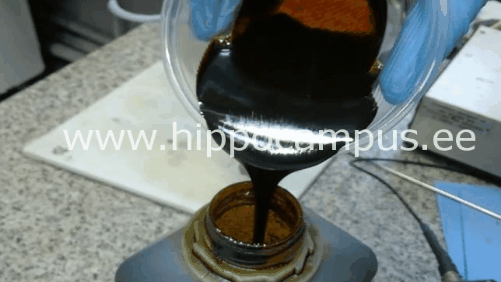Сreosote oil for wood treatment
Minimum order quantity: 36 MT
(2×20″ containers)
Packing: 200 Lt steel drums on wooden pallets, 4 drums on one pallet. One 20″ sea container 80 drums.
Creosote (coal tar oil) is used as Carbon Black Feed Stock (CBFS) – raw material in Carbon Black manufacturing.
The main purpose of use of coal-tar creosote is wood preservation (vacuum pressure impregnation) for industrial purposes: electricity poles, railway ties, and sleepers, etc. No other wood treatment chemical can substitute creosote’s durable and strong quality effect; however creosoted wood has acknowledged harmful human health effects and environmental impact.
The process of vacuum pressure impregnation of wood with coal-tar creosote oil is called creosoting.
Coal tar creosote is famous in its stringent odor; rather say a powerful specific smell featuring traditional coal-tar creosote. Its smell is due to coal-tar creosote’ specific chemical composition. Coal-tar creosote is a mixture of diverse chemicals that are combined in four major classes of creosote compounds, see the table below Composition.
Composition and use of coal tar creosote is regulated in each country on its own. And these regulations are mainly applied to the content of benzo-a-pyrene (BaP) and phenols.
In Europe, all chemicals imported, to EU, produced and/or used in EU must be registered with ECHA and obtain a REACH registration number. In 2003 EEC with the aim of protecting human health and the environment in the European Member States decided restricting use of dangerous substances and coal tar creosote oil in particular. Restrictions on use of Creosote and creosoted wood imposed under the REACH regulations are described in detail in Annex XVII of the REACH Regulation https://echa.europa.eu/substances-restricted-under-reach (search for “creosote”)
Creosote quality data
| Characteristic Property | GOST 2770-74 CIS/Ukraine | BS 144 type 2 UK |
| Benzo[a] Pyrene concentration, mg/kg | not rated | 500 max |
| Insoluble in Toluene, % (m/m) | 0,3 max | 0,4 max |
| Liquidity temperature (°C) at which the product is completely liquid after 2 hours | 32⁰C (residue at 35°C is absent) | 32⁰C |
| Phenols water extractable, % | 5,1 | 5 – 20 |
|
Distillation, (m/m), %
| 3 max (at 210°C) 10 – 35 (at 275°C) 30 – 50 (at 315°C) 70 min (at 360°C) |
5 max (at 205°C) 5 – 30 (at 230°C) 40 – 78 (at 355°C) 73 – 90 (at 355°C) |
| Water content (v/v), %, max | 1,5 | 1,5 |
| Density (kg/m3) at ⁰C | 1090 – 1130 at 20⁰C | 1003 – 1108 at 32⁰C |
| Flash point, °C | 105 °C min Cleveland open cup | 61 °C min Pensky-Martens closed tester |
| Viscosity | 1,3 Assum.° at 80° C | 4 – 20 mm2/s kinematic viscosity at 40° C |
| Colour | Dark brown to black | Dark brown to black |
| Naphthalene content (% (m/m)) | 2,25 | 15 max |
| Composition | % |
| Aromatic hydrocarbons Consist of: | 75-90 15-50 45-70
|
| Tar acids (distilled below 2050C) Consist of: phenols, cresols and xylenols, carbolic acid | – 1-1,5 |
| Tar bases | 1-2 |
| Aromatic amines and Heterocycles | 01-1,0 |
| CAS # | 8001-58-9 |
| EU # | 648-101-00-4 |
| HS Code | 27079100 |
| EINECS # | 232-287-5 |
| ADR/RID Class | 9 |
| Hazard Index | 9 |
| UN Number | 3082 |
| IMDG Class | 9 |
| Label | 9+MP |
| Packaging group | III |
Ask Your Question
WhatsApp:
+ 372 581 788 67
e-mail:
sales@hippocampus.ee
